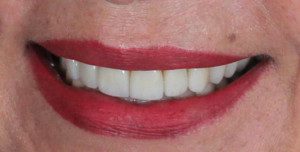
1 of 27
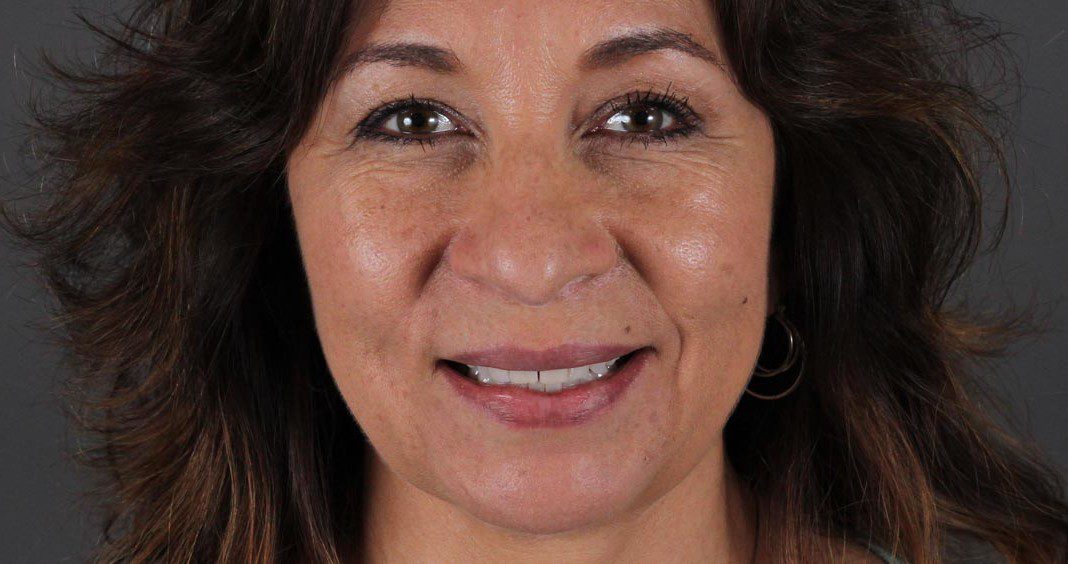
Pre-treatment smile. An attractive woman who has been grinding her teeth most/all of her life. Her grinding pattern (different for all people) is uniform as there is still symmetry in the teeth.
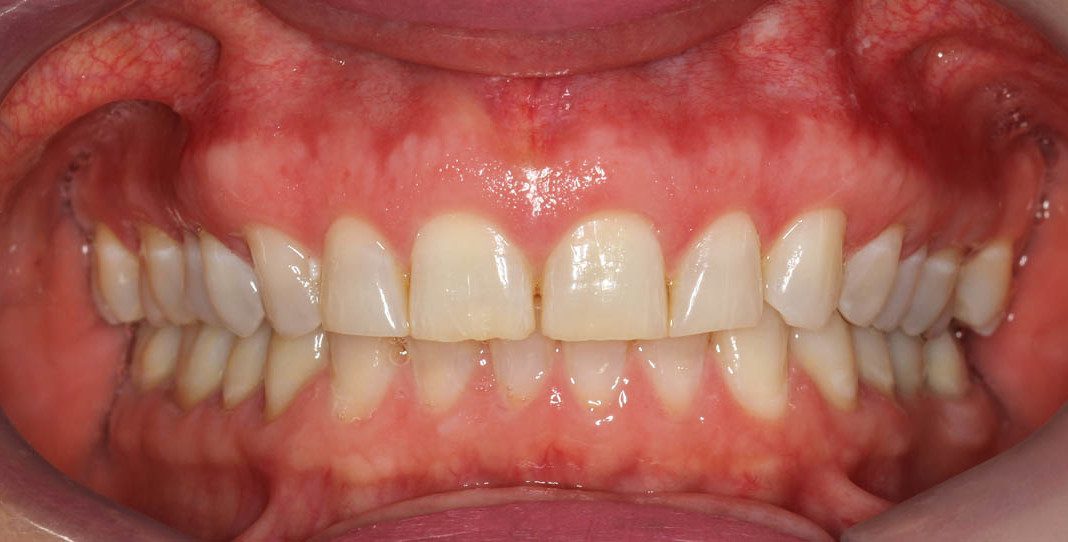
Close-up view of teeth showing more wear. Genetics and stress are the typical cause of dental wear. Most patients do not know they grind their teeth. Because most pathologic wear happens during sleeping hours (nocturnal bruxism) most patients are unaware of the problem. To add to the problem, most people are happily in denial about grinding even in with overwhelming evidence through pictures. Pictures are a great way to evaluate your smile. If you notice that you don’t show as much of your teeth as you did 10-30 years ago, if you have jagged biting edges or you have broken a tooth off…you may well be a grinder.
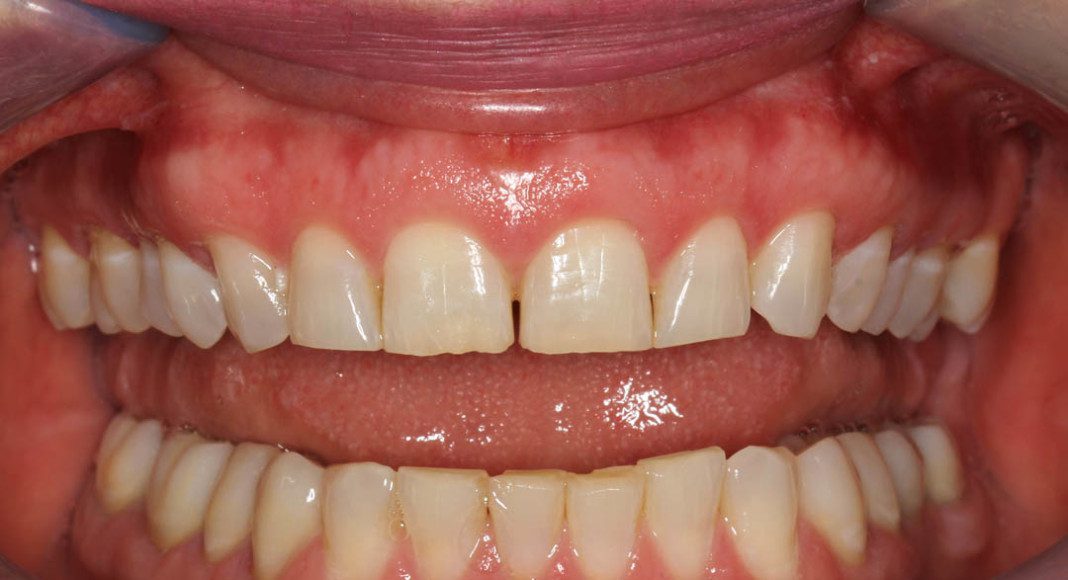
With the mouth open it is easier to appreciate the flatness of all teeth, especially the front teeth. If your front teeth are all the same level (flat) you are absolutely a grinder. Note the lower teeth are milled into the mirror image of flatness.
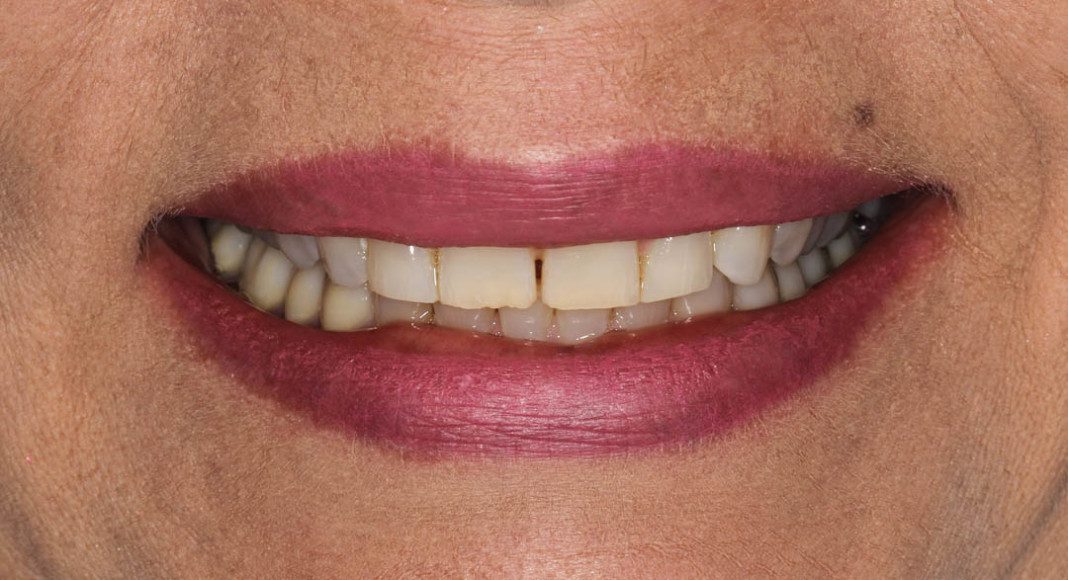
Many patients with less than perfect teeth are reluctant to smile, fully. Here, is a half-smile which shows the “tooth display” deficiency (short teeth).
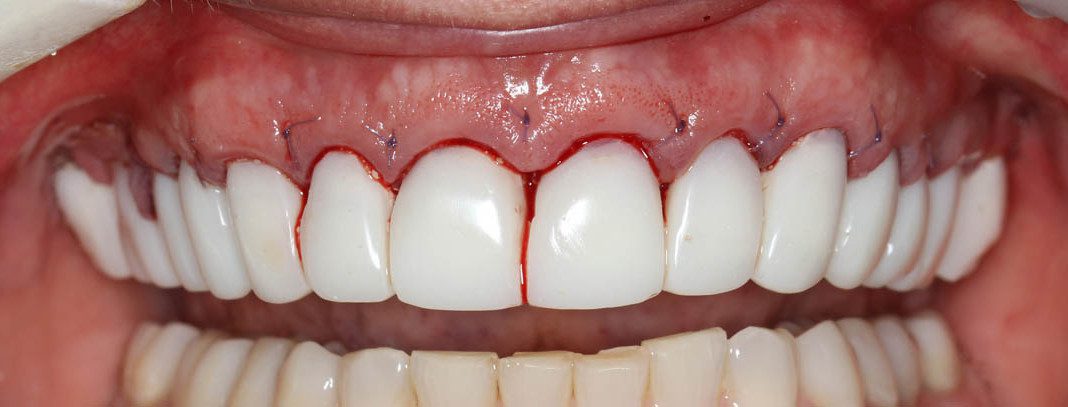
Immediately after “crown lengthening” surgery. This procedure lengthens the teeth in the upward direction (longer teeth at the gumline). Many grinders have great bone and gum tissue. In fact, many times, there is excessive bone and gums. Crown lengthening surgically removes some of the excessive gum tissue while the bone is recontoured to result in longer, more proportionate teeth. This is NOT a painful surgery and it improves the outcome, exponentially. Many “Cosmetic Dentists”(no such specialty) do not recommend crown lengthening. This omission results in short, square crowns which are not aesthetic.
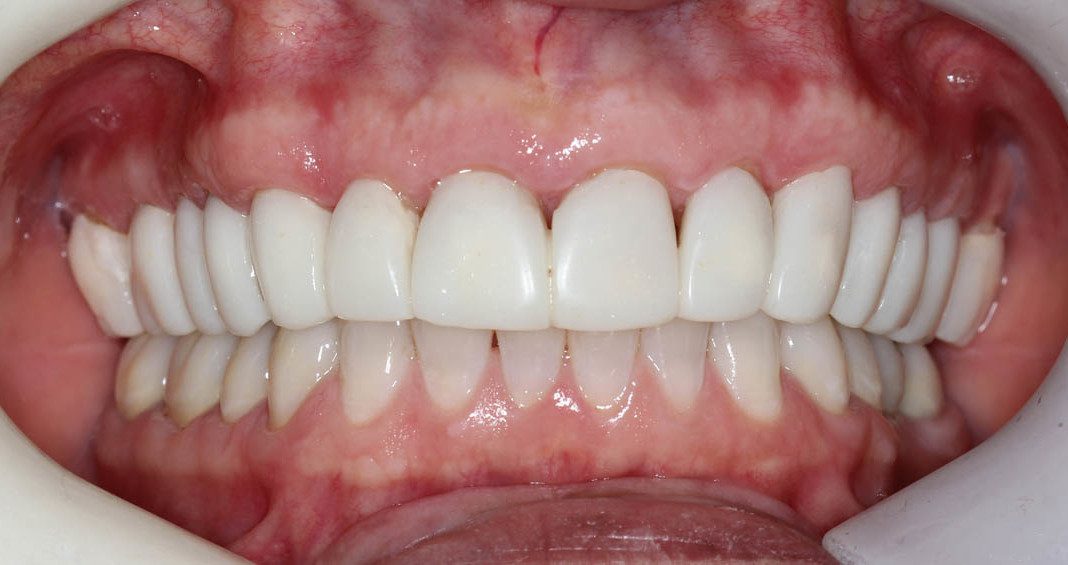
Temporary crowns are made at the above, crown lengthening surgery appointment. The temporary crowns server two purposes: Hold the tissue in its new place and increase tooth length for an improved smile.
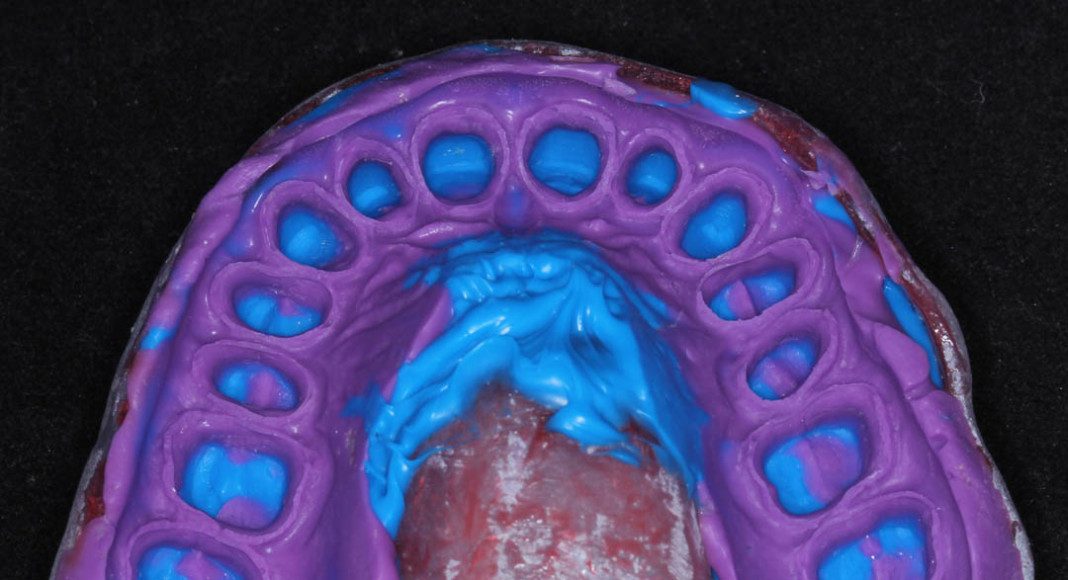
After two months of healing, a “final impression” is made. THIS IS THE MOST DIFFICULT PROCEDURE IN DENTISTRY and most dentist simply cannot do it. Why is it difficult? Preparing 14 teeth, protecting the gums, retracting the gums, prevent bleeding, control material, keep patient comfortable. Less than 5% of dentists can do all the above. Note that every spec of the margin of all 14 crowns are represented in this impression. This is not an exaggeration… 5%.
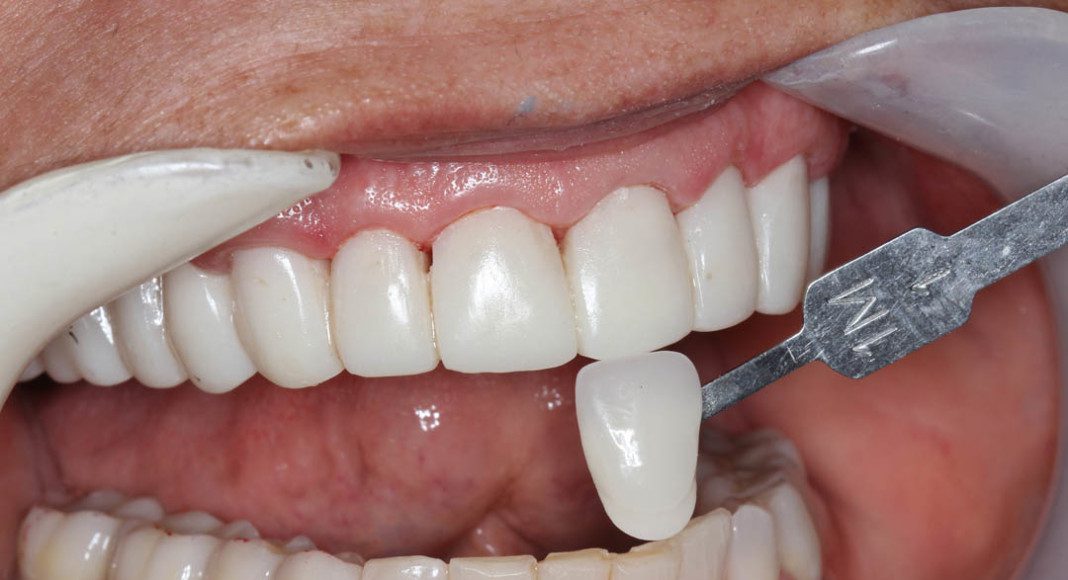
The patient and the dentist work together to instruct the lab as to the color of the teeth. This is called a shade tab and is one of several dozen colors we can chose from for the final crowns.

Smiling pictures are used to demonstrate the shape, length, character and color of the temporaries. Even if changes are requested, the temporaries are the prototype from which the changes are made.
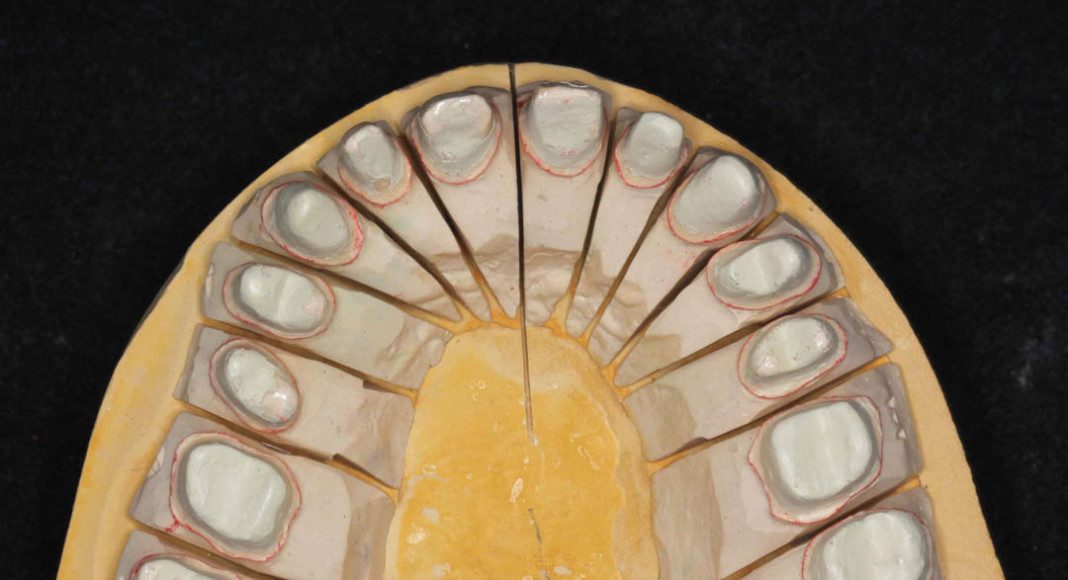
This is called a “master cast”. This cast is the “working cast” from which the final porcelain crowns are fabricated. It is made from the final impression. Because the final impression was perfect, this cast is as close to the exact representation of the mouth as possible with today’s materials. Many studies have shown that this analog (impression) technique is still more accurate than the digital scans made from intra-oral scanners. Intra-oral scanners are most accurate for single crowns and their accuracy decreases with each additional crown. This technology will replace gooey impressions someday as advances are made. For today, do not trust an office that only has the digital scanners to make multiple unit restorations. Science does not support this technique for multiple unit crowns and, especially full arch treatment.
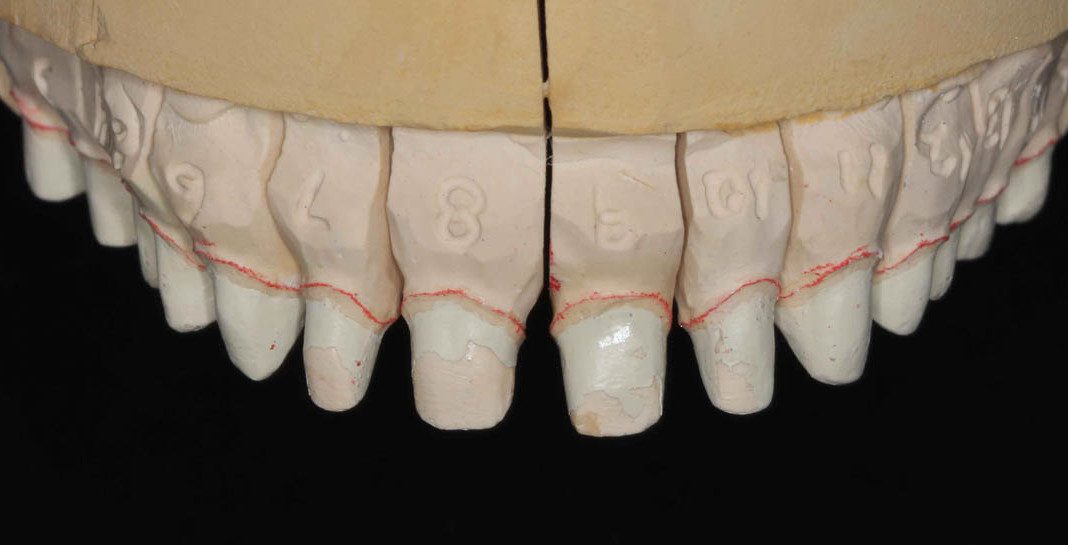
Frontal view of master cast. Red lines are the finish lines for the final crown margins. See video on “All Crowns are not Created Equally”.
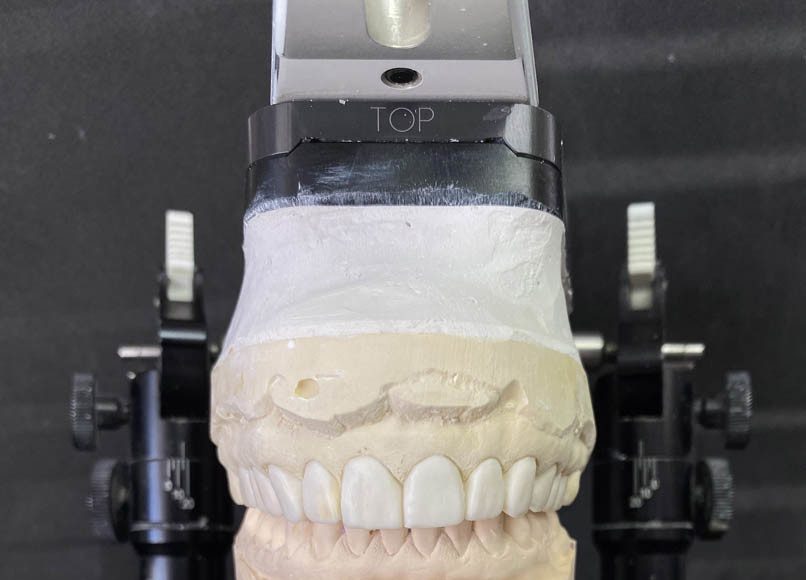
The metal device in this picture is called an “articulator”. The articulator simulates the human skull, specifically the Temporomandibular Joint (TMJ = Jaw Joint). The upper and lower members are where the stone casts of the patient are placed. Here, the original diagnostic wax-up (wax mock-up before the case is started, for patient approval) is articulated against the patient’s lower cast.
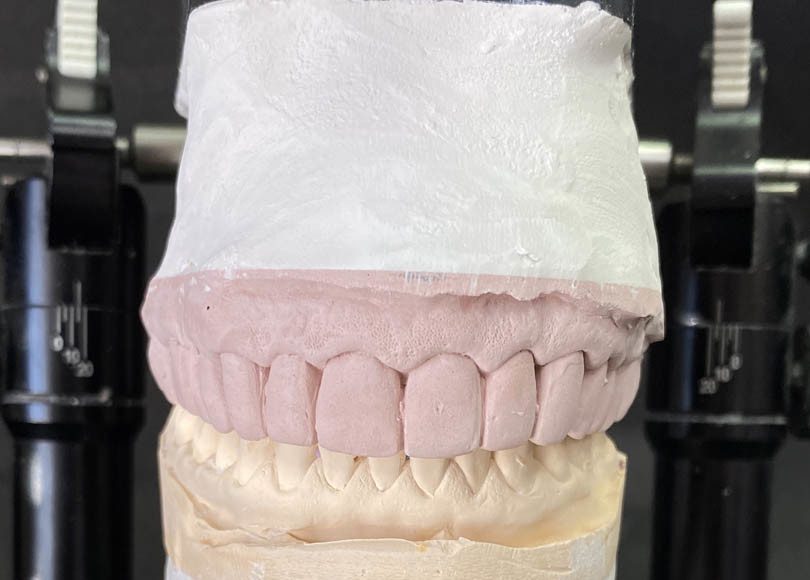
Here, the cast of the patient’s temporary crowns (fashioned after the diagnostic wax-up) are articulated against the lower cast. High quality labs use every advantage to get the final crowns to be as perfect as possible. This picture and the one before show how we use two references while making the final crowns.
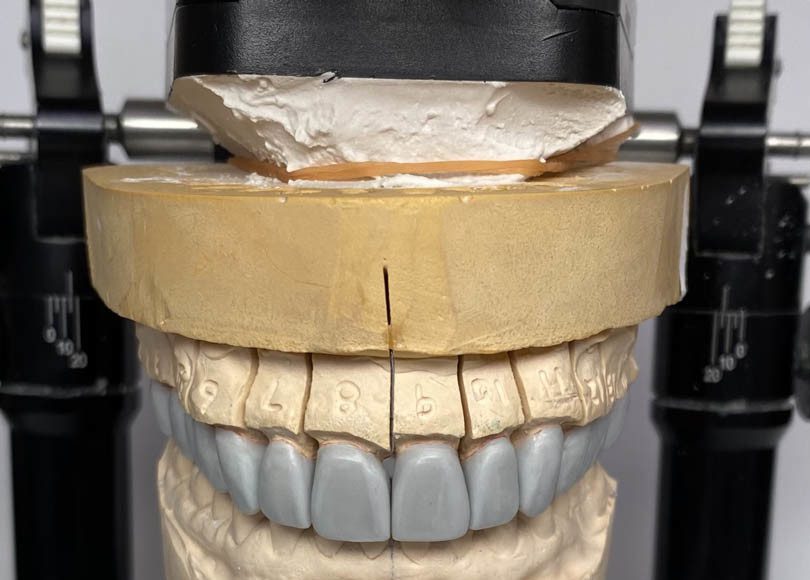
Frontal view, articulator. A second wax-up must be completed on the master cast. This wax-up is very precise and these wax crowns will be converted to the final porcelain crowns.
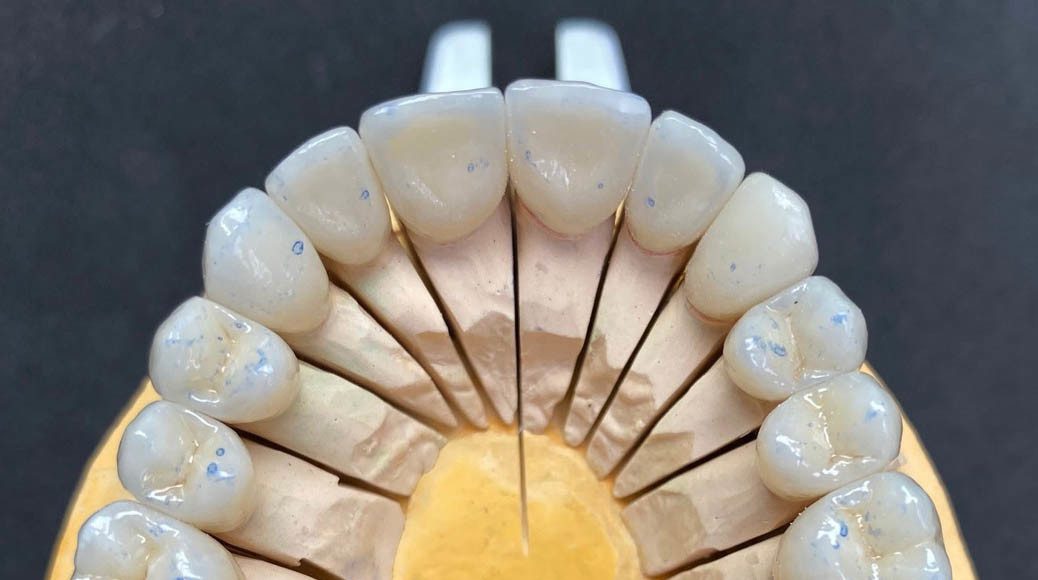
Occlusal view of final EMAX (lithium disilicate) crowns. The blue marks are from bite adjust in the lab. The overwhelming majority of bite adjustments should be made in the lab. If the dentist has significant bite adjustments in the mouth, something was done incorrectly. In today’s dental world we have two basic types of “porcelain” crowns and, neither is porcelain: 1) Lithium disilicate (EMAX) 2) Zirconia Both materials can be made to resemble natural tooth structure. Both are very hard materials. Lithium disilicate is easier to characterize. Both materials are harder than enamel which means they will wear (abrade) natural teeth. As a precaution, we like our patients to wear a mouthguard, at night, to prevent undue wear of the natural teeth.
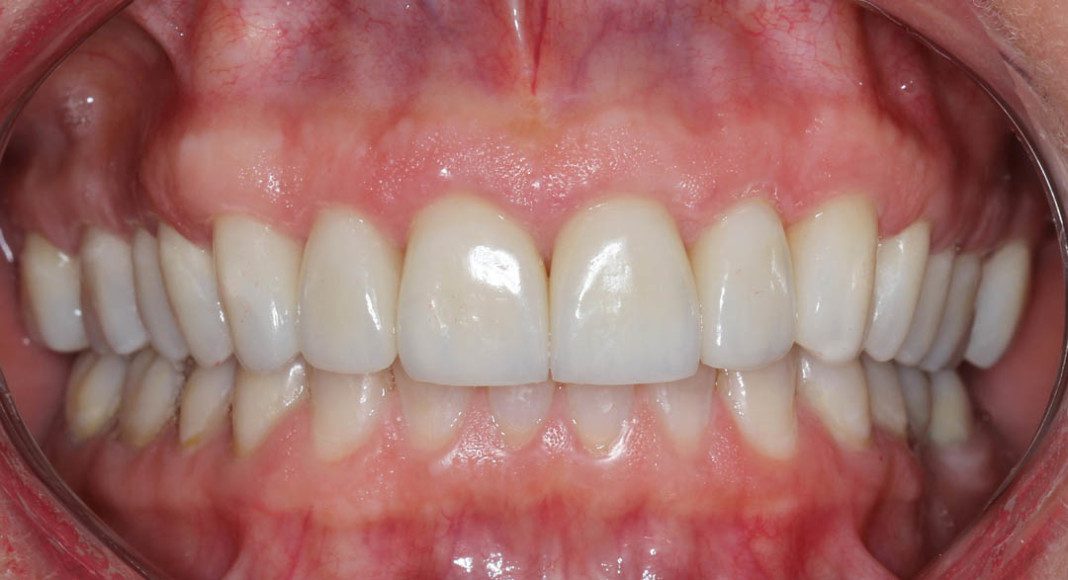
Final crowns after two weeks, centric relation (jaws together). This patient elected to not restore her lower teeth as they were healthy. These teeth were whitened and the upper teeth made to match them. Many patients elect to go whiter than their other teeth or to restore their other teeth so that all teeth can be whiter. Ultimately, this is based on patient preference. Some patients want neon white and others want a more natural look.
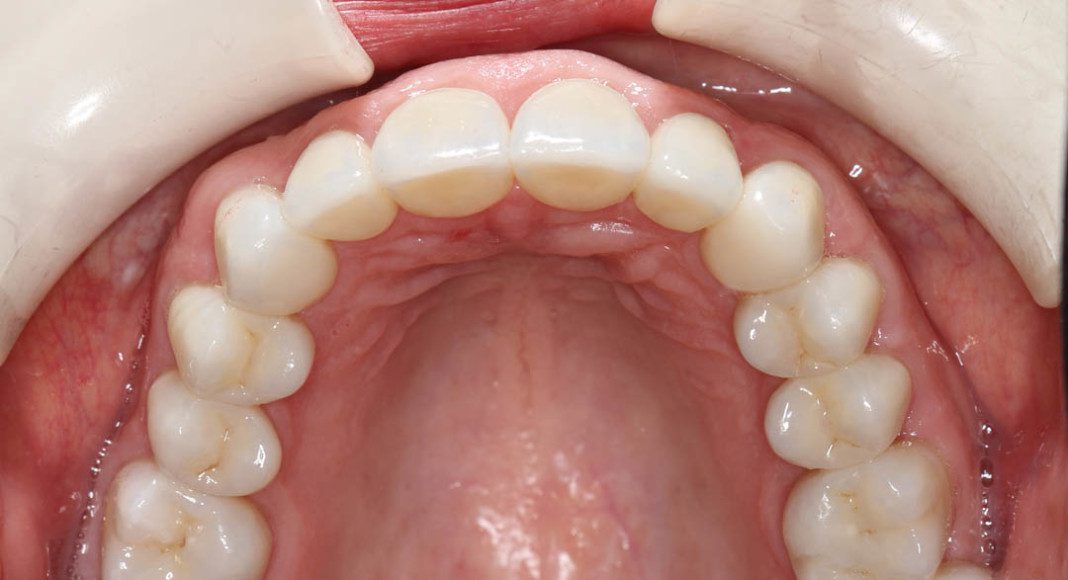
Occlusal view of final crowns. Note the normal anatomy on the occlusal (top, biting surface) of the back teeth. This is the anatomy that crowns should have as we are attempting to mimic natural teeth. Very few offices work with labs who can accomplish this… because it’s cheaper NOT to make them look like teeth.
















